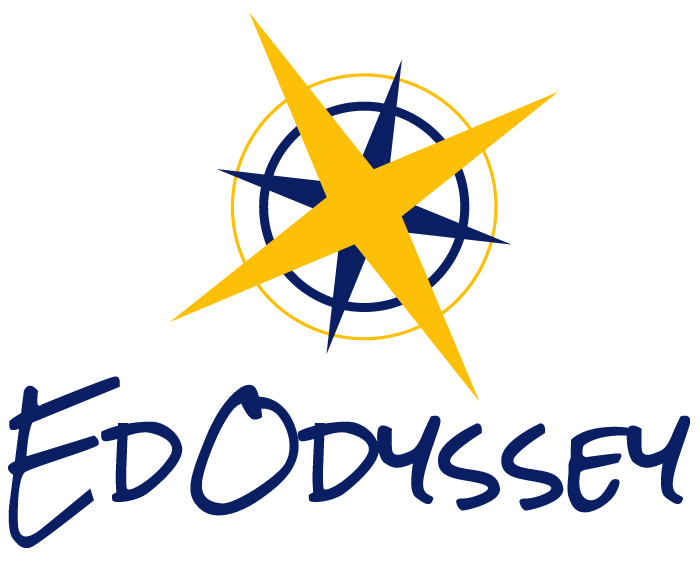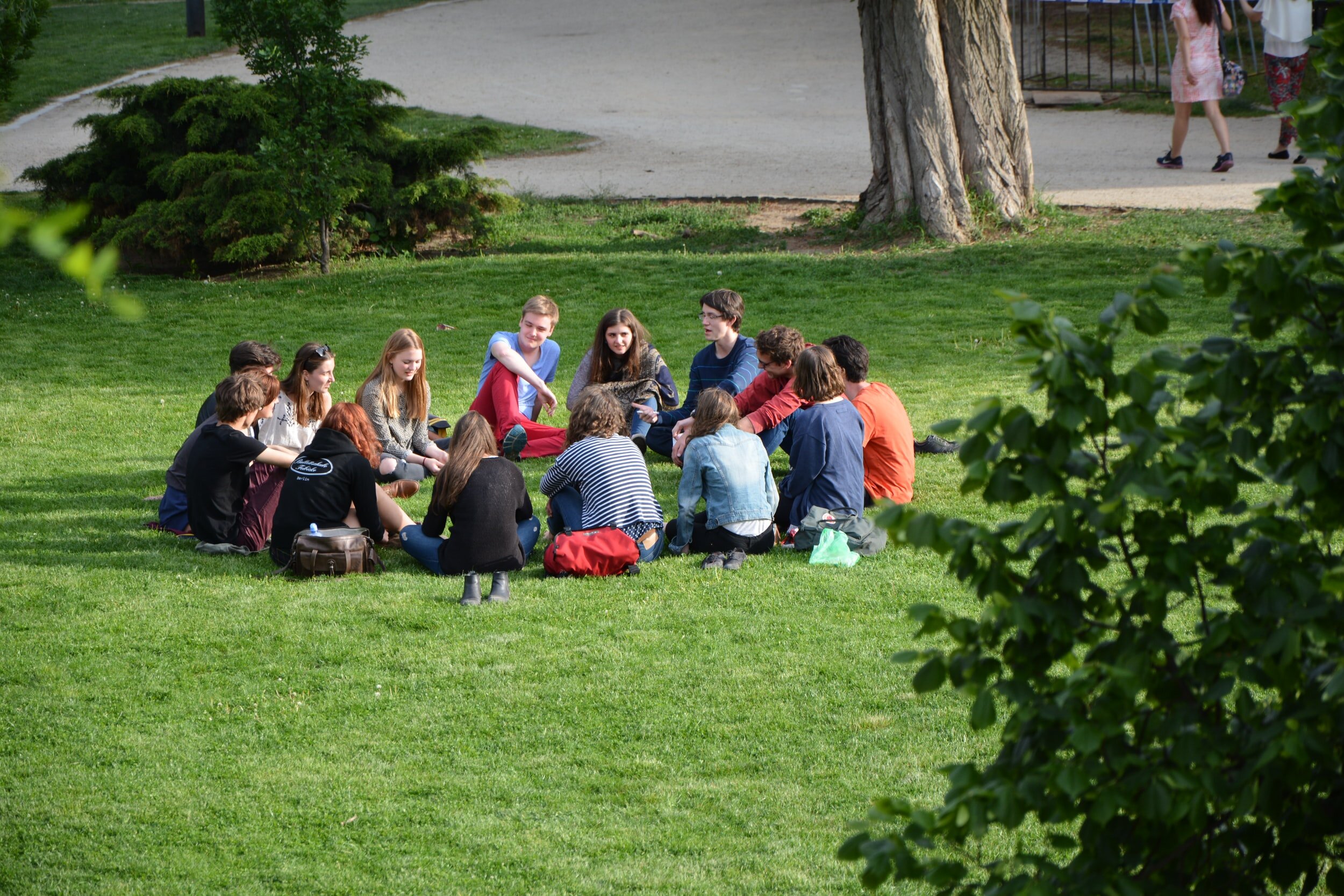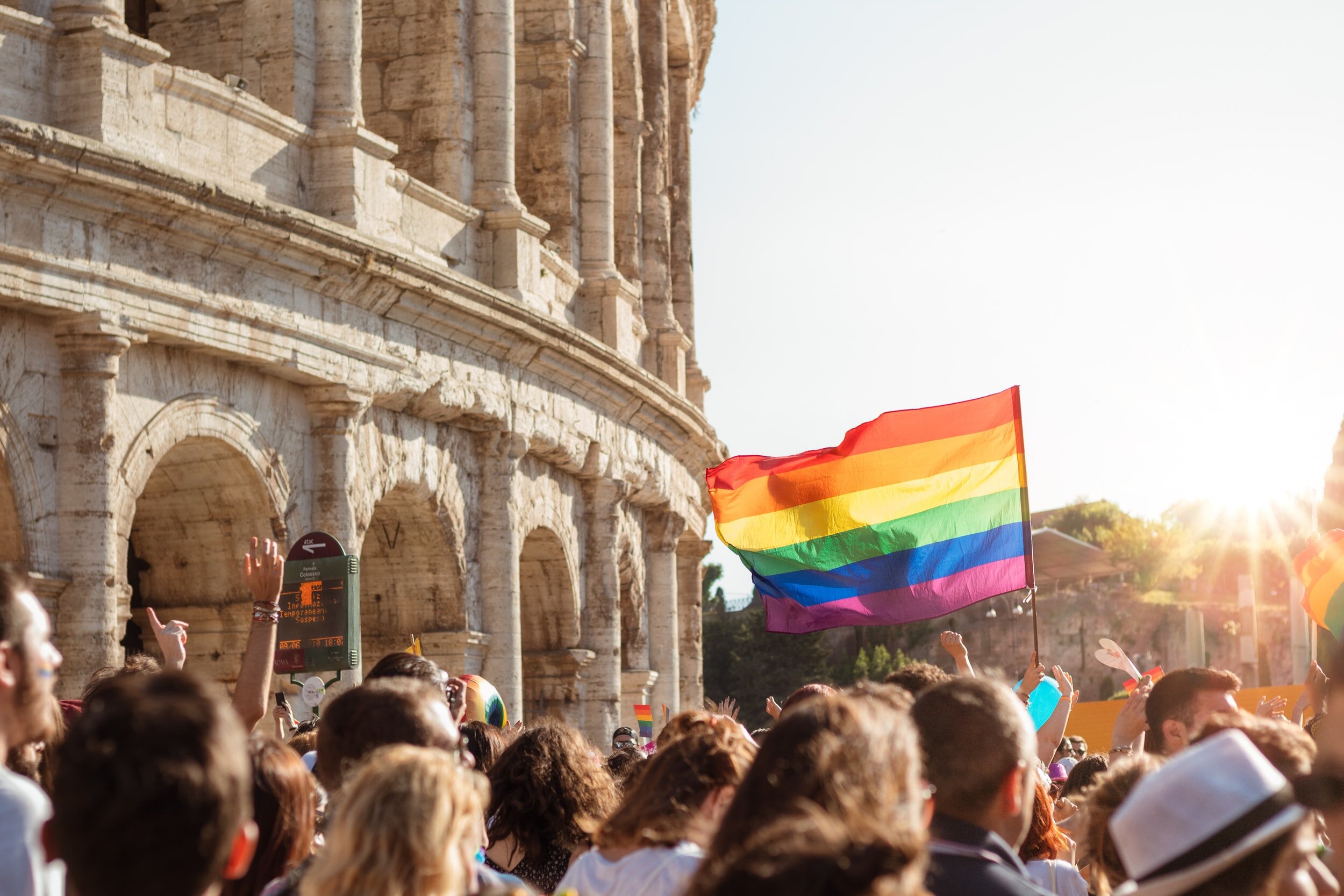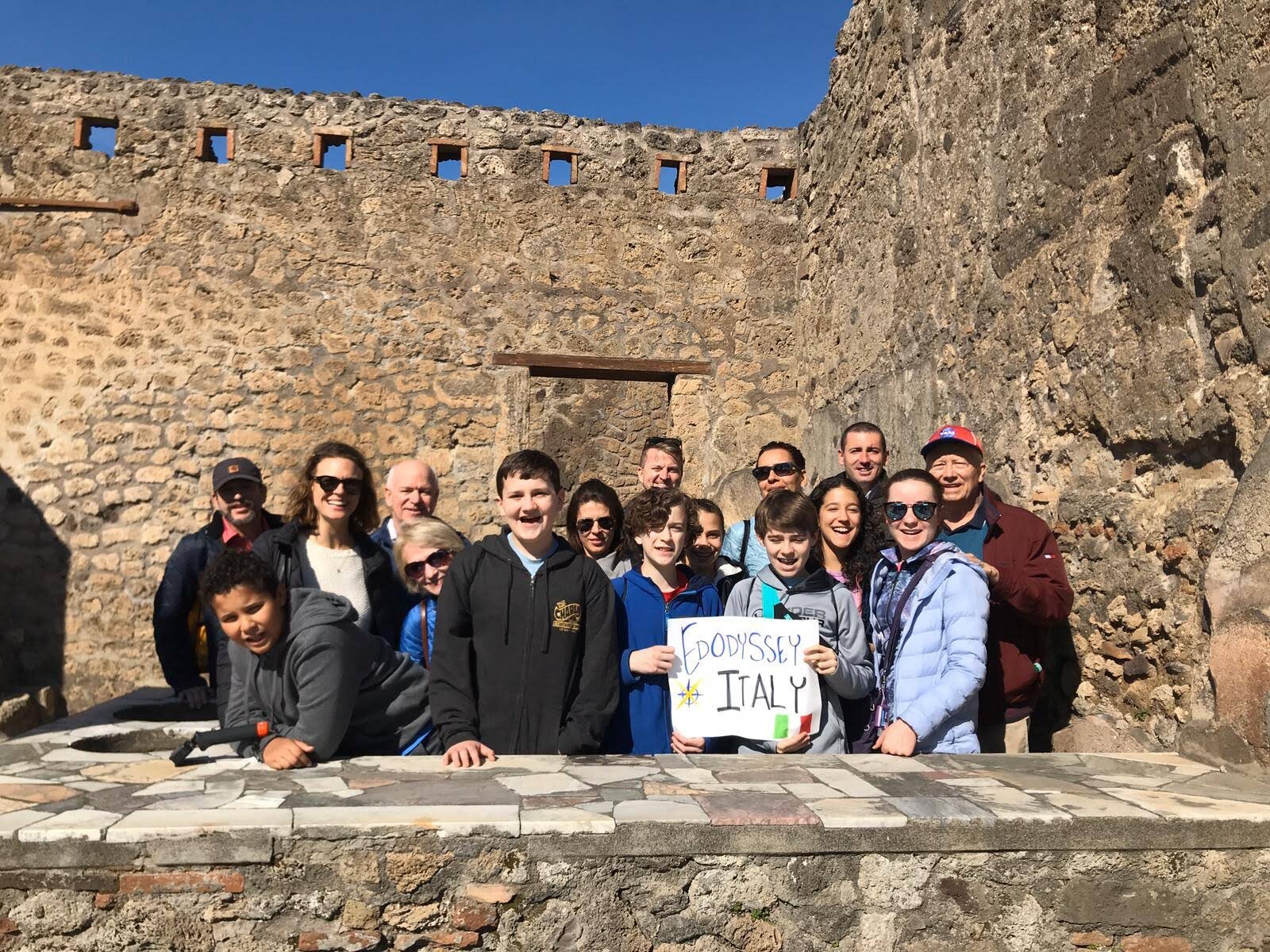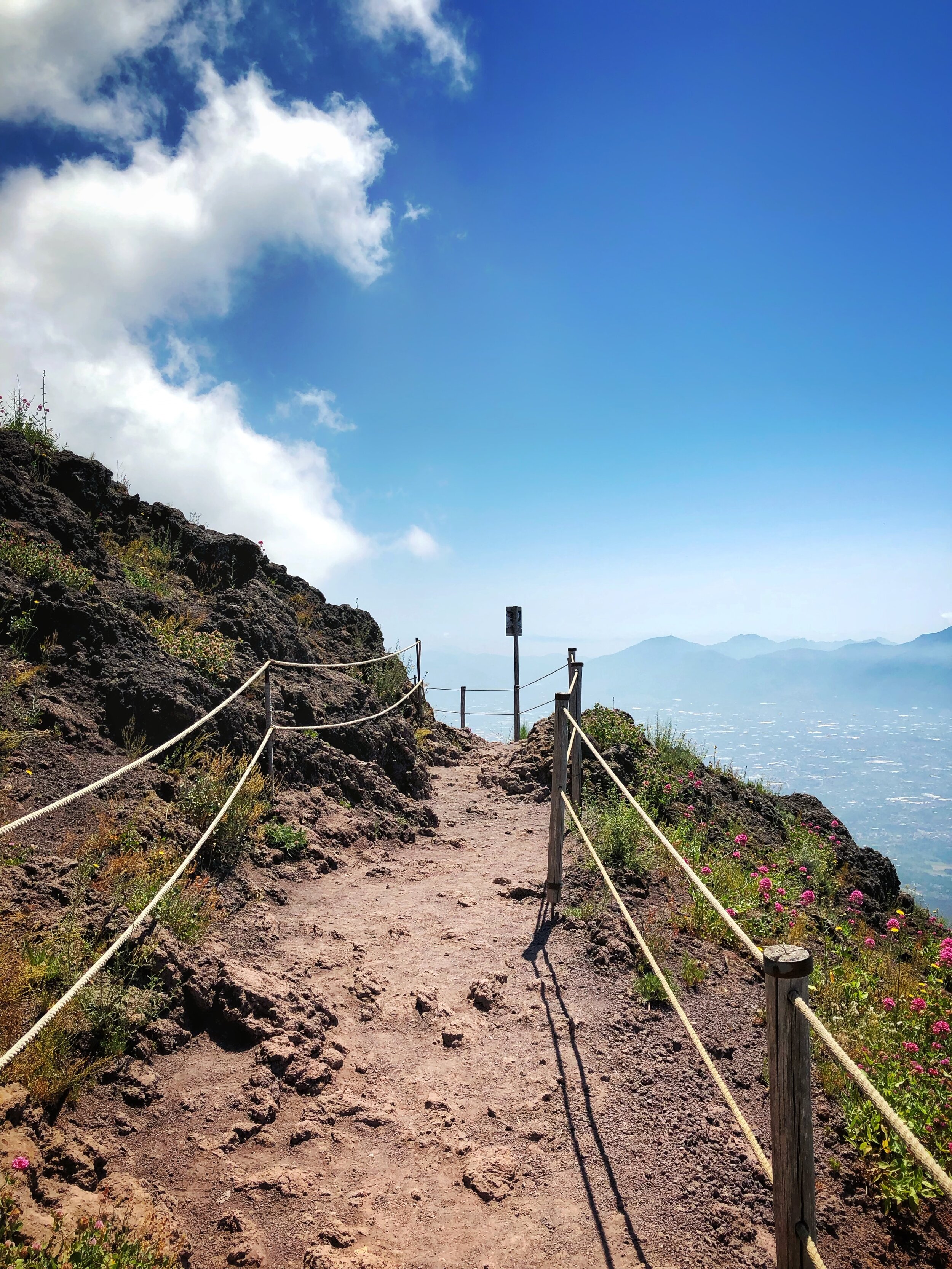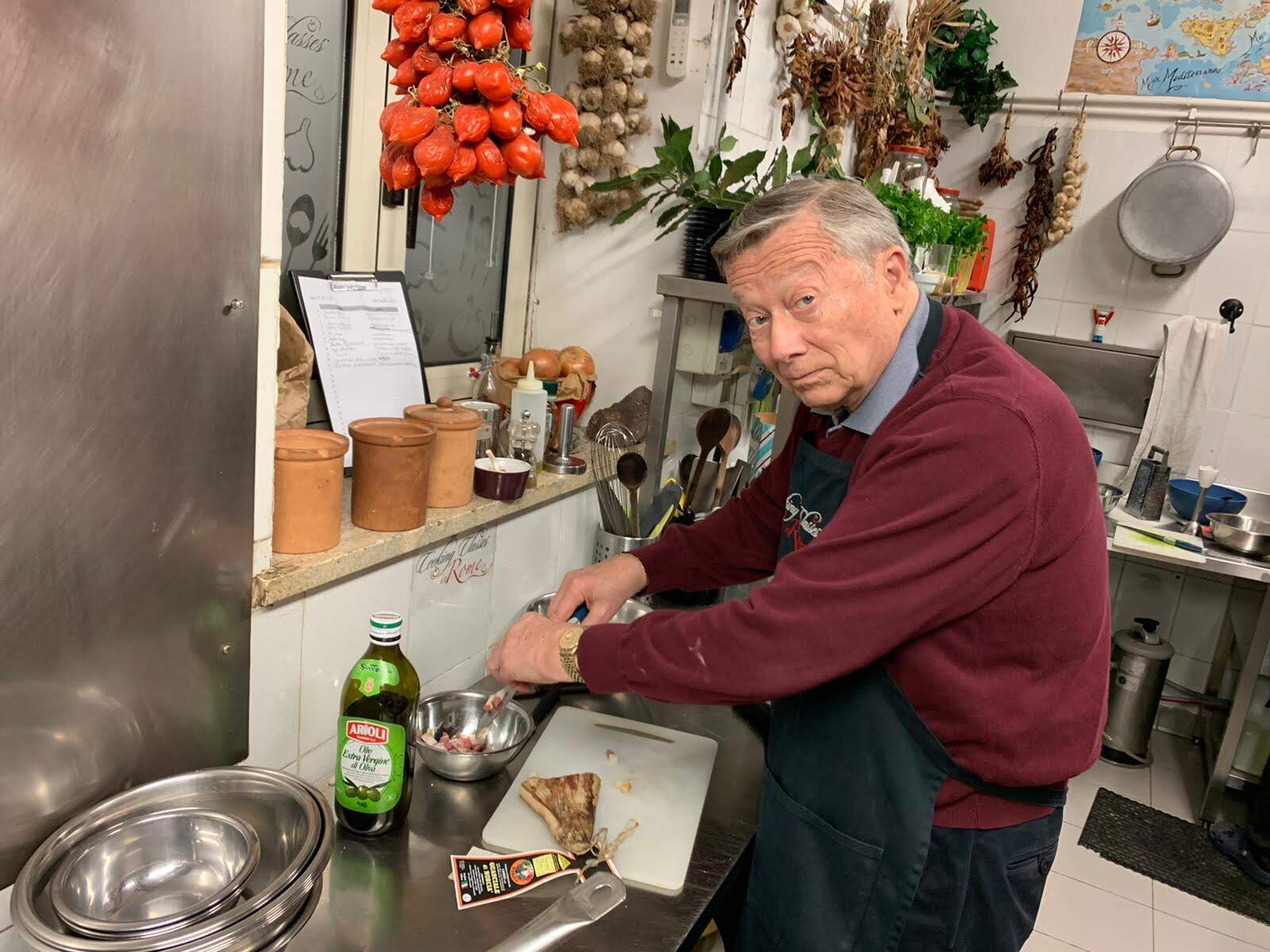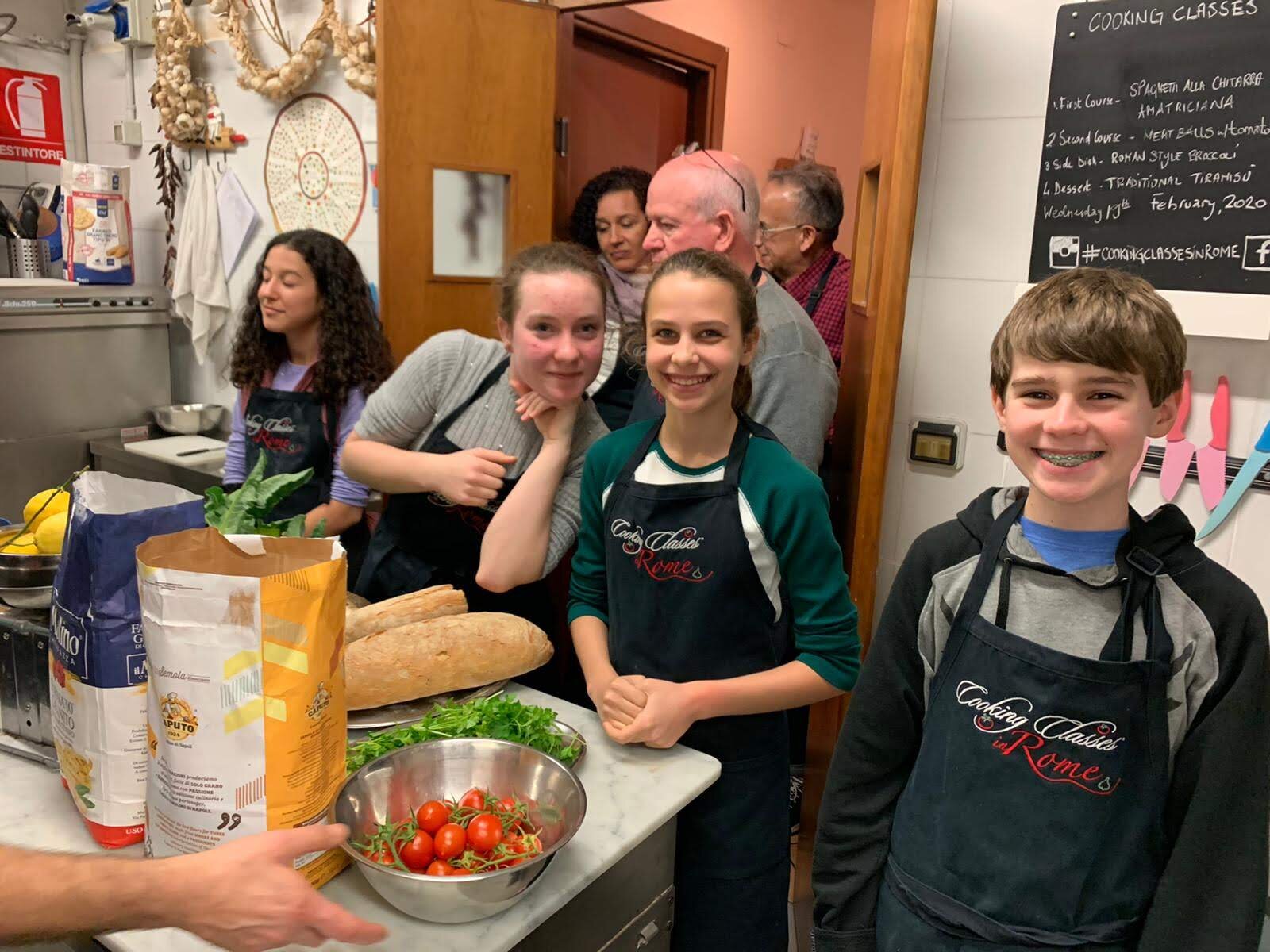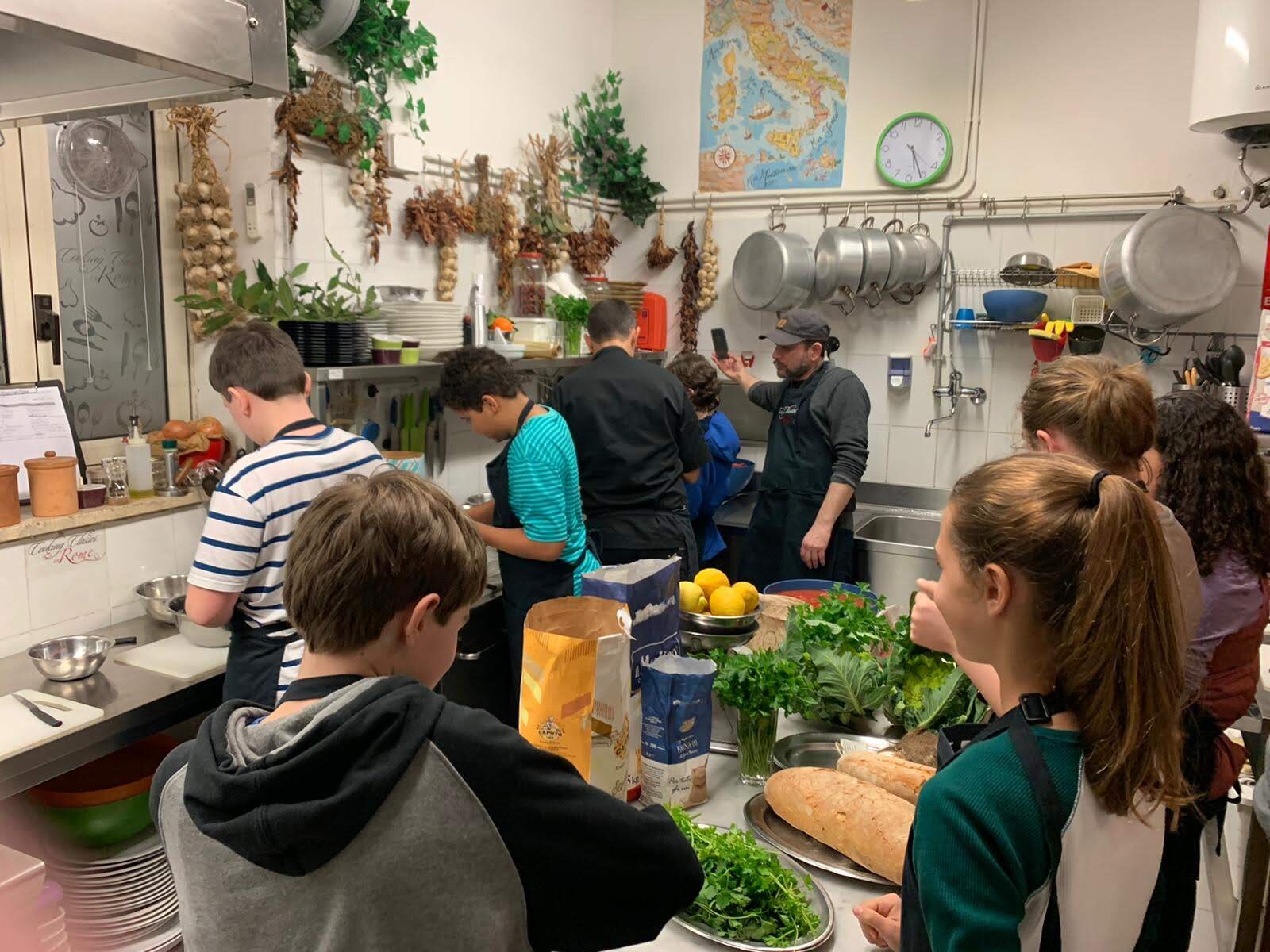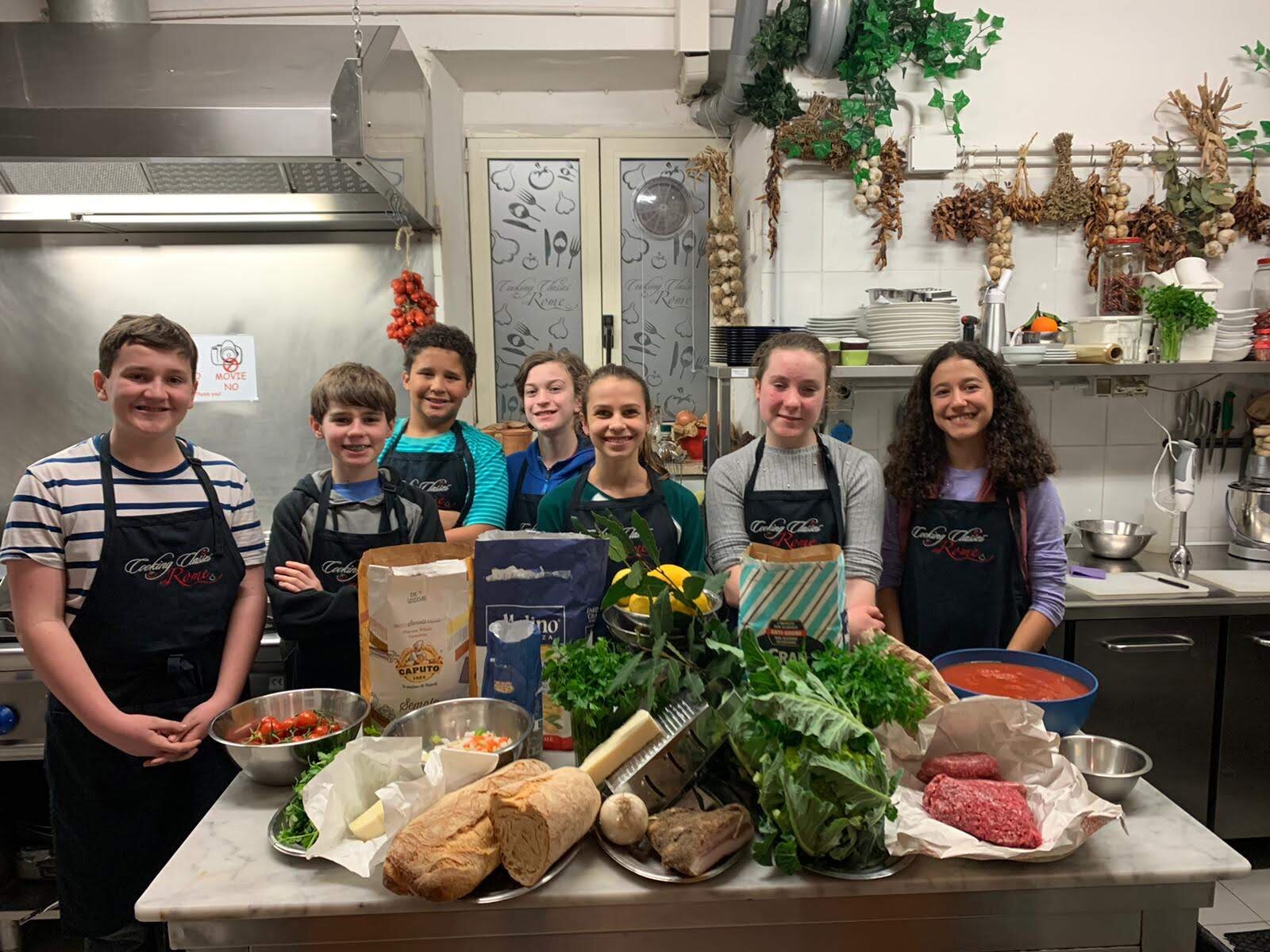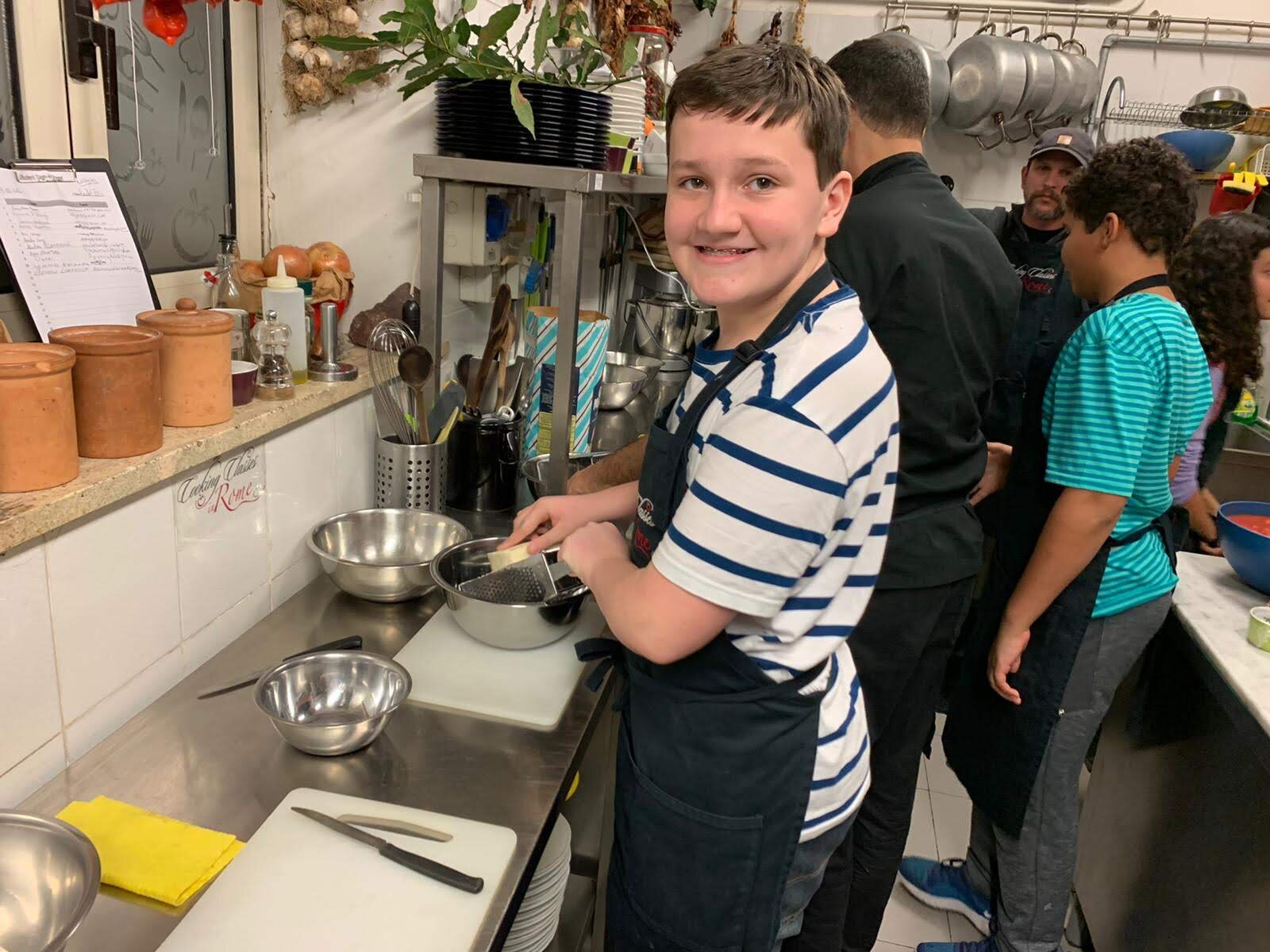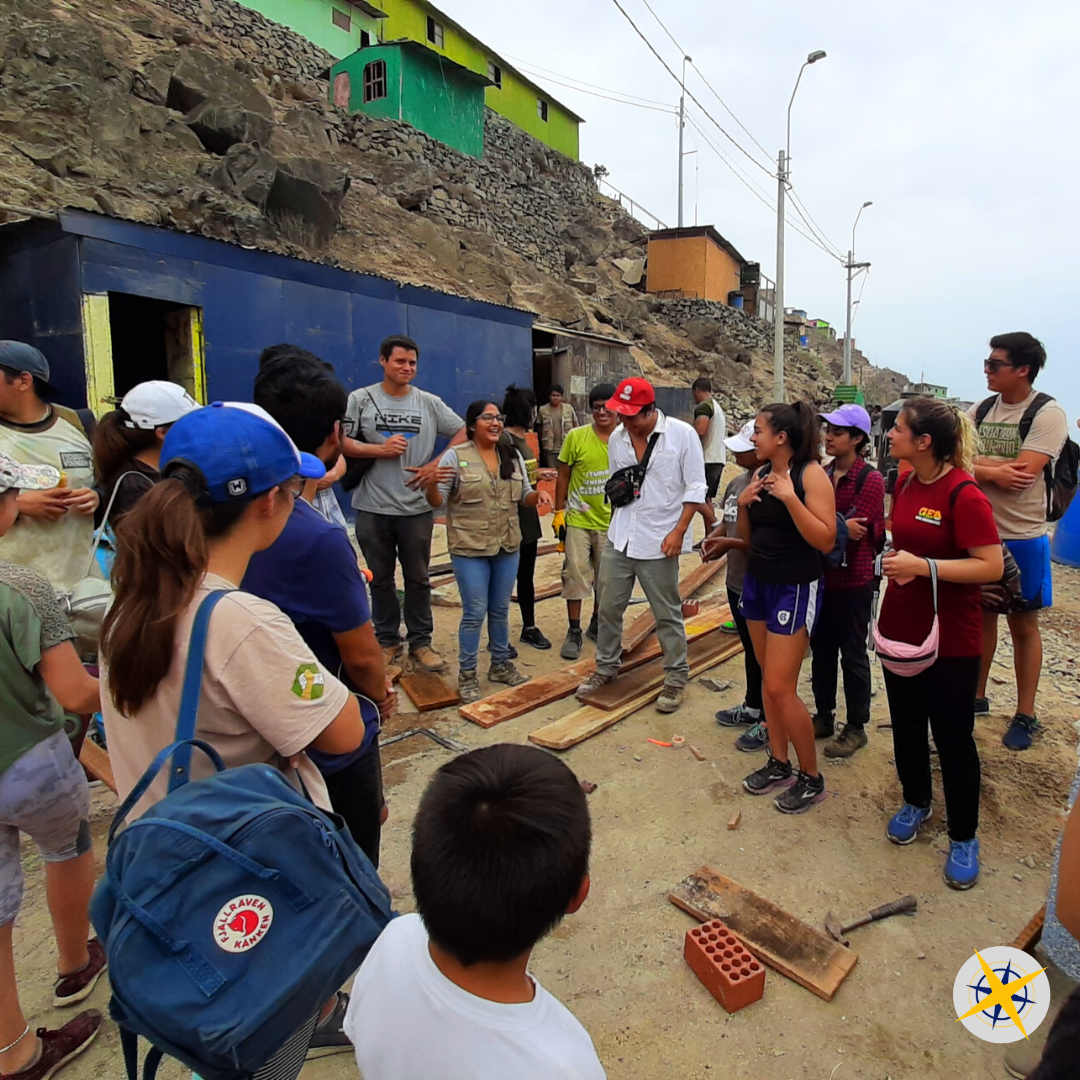Supporting LGBTQ+ Study Abroad Students: Questions and Resources
LGBTQ+ students who go abroad face questions when evaluating study abroad options and opportunities. Before considering a study abroad experience, each student should consider how his/her/their program prospects will support him/her/them throughout their experience.
Please note that in this blog, we often use the plural “they/them/theirs” when referring to all prospective study abroad students.
LGBTQ+ students who go abroad face questions when evaluating study abroad options and opportunities. Before considering a study abroad experience, each student should consider how his/her/their program prospects will support him/her/them throughout his/her/their international experience experience.
Students will confront questions throughout their experience abroad, and the questions to support each of them during pre-departure and throughout their respective experience abroad below:
PRONOUNS: How do students identify and what pronouns do they use?
The way that students see themselves and their identity matter to us. Our team members identify their own pronouns in their emails. All of our study abroad students are encouraged to share their own in their emails as well so everyone feels comfortable with sharing their identity.
COMING OUT: Do students want to share their identity as a member of the LGBTQ+ community? How can students go about doing this?
When it comes to the identity of our students, who they are, and how each of them see themselves in the world, they will each have a dedicated local in-country team who wants to learn about each student to help him/her/them to embrace his/her/their identity.
Students are encouraged at any point during our pre-departure or on the ground with one of our EdOdyssey team members to come out if they choose to do so.
REFLECTIONS: When will students have a chance to express themselves and identity during their program?
During our short-term study abroad programs and our excursions, we have reflections at the end of most daily meet ups and at the end of each day during excursions to share thoughts and unpack feelings about what we’ve learned.
These reflections create a safe space that allows each student to share their experiences based on their identity. Every student is welcome to share as much or as little as they’d like!
LIVING SITUATION: Do students want to come out to their roommates and/or homestay family?
Our local team encourages students to embrace who they are, and if a student decides to come out, then students are welcome share that with our team so we can support it accordingly.
For our accommodations, we offer different types of lodging depending on the different programs that we offer for international programs so see which one is most applicable to you below:
Semester Programs (Dorms) - As a part of your semester study abroad living situation, all students living in dorm-style housing will fill out a roommate matching survey. Our local team will find the best roommate possible based on our roommate matching criteria.
Semester/Short-Term Programs (Homestays) - If you have a homestay as a part of your program, your local in-country team will support you to come out to your homestay family. Our team members can help facilitate conversations to allow students to speak in their native language or provide students with tips on how to approach the conversation if they prefer to engage their homestay family directly.
Short-Term Programs (Hotels) - If you stay in a hotel, or other type of accommodation such as as hostel as indicated in your program itinerary, you’ll be matched with a fellow classmate based on sex.
Generally speaking, we welcome feedback and input from our US-based partner institutions to support us in finding the best housing/homestay match possible for our students.
LGBTQ+ Community Abroad: Do students wish to be part of a supportive LGBTIQ+ community abroad? Are there LGBTIQ+ organizations on their host campus or in the community?
If students would like to share your experiences with fellow study abroad classmates as a group or other individuals, please contact your in-country coordinator to support.
As an organization, we encourage open communication between our participants, our local team members, and partners to create an environment that facilitates learning, mutual respect and understanding.
HEALTH & SAFETY: What if a student doesn’t feel safe sharing certain details about their identity? What if I feel that a participant feels that they are a victim of discrimination?
If any student(s) encounter challenges, or that he/she/they are a victim of an aggression (physical or psychological), our local teams will provide him/her/they with help, guidance and facilitate any additional professional support, if applicable.
Our team provides 24/7 Emergency Health & Safety support throughout the duration of every student’s EdOdyssey experience. Students are provided with health and safety contact numbers to our team and other important local contact numbers to see to student health and safety.
When it comes to identity-focused questions, our organization encourages all of our participants to share as much or as little as they’d like. Our local team will always have certain emergency contact and personal information to help ensure student health and safety abroad.
LAWS & NORMS: What are laws and cultural norms surrounding relationships and dating in the LGBTQ+ community where students are studying abroad?
Throughout the pre-departure process and in-country experience, each student receives on-going advising with our local team. During pre-departure advising, study abroad participants have a time to ask questions, request details and have an opportunity to engage in discussion with our team on what it’s like to build friendships and connections abroad.
Each country and culture has different social expectations, and as a part of our semester programs, our local teams provide students with a detailed handbook. This resource shares information and tools regarding cultural insights and norms, in addition to key 24/7 emergency local support numbers.
At no point will any student be asked to disclose personal information, relationship statuses, gender identities or other personal information not relevant to details EdOdyssey teams for reservations or not related to supporting health and safety of students.
DOCUMENTATION: If the gender and identity of a student is different from the sex listed in legal documents, or if a student is in the process of transitioning, what types of obstacles potentially face with travel, immigration, and documents?
As a part of all of our programs, if visa processing is required, our local team will help provide support. As each participant in our program fills out paperwork, he/she/they will have the guidance in filling out any necessary documents for academic coursework and if any other relevant relevant paperwork to the experience abroad.
STUDY ABROAD IN SICILY AND FLORENCE: Is Italy considered an LGBTQ+ friendly country?
Since 1861, Italy has been one of the European countries with a pretty progressive legislation for promoting and protecting the inclusivity of gender. At the same time, there are some areas of Italy where discrimination continues to have a presence due to cultural factors. In particular, some of the main reasons why Italy has experienced some reluctance to embrace diversity can be attributed to some strong gender stereotypes due to a mixture of deeply rooted patriarchal and Catholic culture.
Intrepid Travel EU shares some additional insights into Italian culture as it relates to the LGBTQ+ community:
“Italy is largely accepting and welcoming of those who identify on the LGBTQIA+ spectrum. Travelers visiting high-touristed areas such as Milan, Venice, Florence and Rome should have no problem in expressing themselves and enjoying a hassle-free holiday.”
“LGBT couples should have no issues expressing themselves in a respectful way when in public. In more rural and regional areas, overt displays of affection can attract negative attention, as smaller towns tend to be more conservative and less accepting. Homosexuality is much more accepted in the north than the south; however, tourist hotspots, such as Capri and Taormina in Sicily, are well-known as LGBT-friendly”.
In Florence, one of our study abroad semester locations, there is a branch of ArciGay that identifies itself as the leading Italian non-profit organization for the LGBTQI+ community, which recently opened its new headquarters this past June 2021.
Most importantly, our team in Italy and local partners are happy to support students and help facilitate communication if students have any questions or need more information.
STUDY ABROAD IN LIMA: Is Peru classified as a LGBTQ+ friendly country?
It is inevitable to mention that this society remains conservative and sometimes eclectic when discussing the rights of people in the LGBTQ+ community. According to the 2019 Periodic Risk Intelligence and Security Monitor (PRISM) Executive Summary, Peru is ranked as one of sixty-six countries ranked as moderate in terms of risk ratings and trend analyses. As one of major South American cities, Lima has a diverse mix of ethnicities and nationalities with people coming from different parts of the world.
However, Peru as a country maintains its strong conservative, Catholic traditions and continues to work toward providing more equal opportunities for its LGBTQ+ community but the progress has been slow moving. Over the last decades and years, Peru has taken important steps concerning this issue and is increasingly open and inclusive. Their Peruvian Congress has had openly lesbian and gay members who work to expand access to rights in the country, but continue to face opposition in passing and ratifying laws to recognize same-sex marriage and laws condemning forms of discrimination against members of the LGBTQ+ community.
At EdOdyssey, we have hosted student abroad alumni and interns from the LGBTQ+ community who have expressed their love for the Peruvian culture. Please see our post about our study abroad alumnae, Johanna M., who shares her experience in Lima, Peru.
LGBTQ+ RESOURCES
Please take a look at the materials that provide additional insights in how other organizations, institutions, and their members support the LGBTQ+ community as well below:
Arcigay Firenze: Learn more about this Italian non-profit that supports the LGBTQ+ community through advocacy on issues facing its members around Italy.
The Lesbian, Gay, Bisexual, & Transgender U.S. Peace Corps Alumni: Gain insights into LGBTIQ+ individuals who served as Peace Corps Volunteers abroad, including information about their experiences abroad.
The International Gay and Lesbian Human Rights Commission: Shares information about human rights campaigns related specific countries around the world regarding sexual orientation, gender identity, and gender expression.
LGBT Student Guide for Education Abroad: Provides insights, resources and materials from a University of South Florida undergrad perspective.
LGBT Travel Information: Explore US State Department resources and materials that provide the LGBTQ+ community with information with information to know before going abroad.
National Center for Transgender Equality: Provides transgender people with advice on how to navigate air travel.
International Gay and Lesbian Travel Association connects and educates LGBT travelers and the businesses that welcome and support them along the way. All members can customize their travel experience and share it with others.
Out Traveler: Learn more about LGBT-focused locations and events.
The International Lesbian, Gay, Bisexual, Trans, and Intersex Association: Shows research related to legislation and laws specific to gender expression/identity and sexual orientation.
Is Italy LGBTQIA+ friendly?: Read more from Intreprid Travel EU about their insights into living in Italy as a part of the LBGTQ+ community.
The Fund for Education Abroad: Providing LGBTQ+ students studying abroad an opportunity to access additional funds through their Rainbow Scholarship.
We want to thank the University of Denver for providing us some inspiration, resources and information from their Inclusiveness Abroad Page!
April Feature - Julia P.: How Study Abroad Builds Perspective
In this month’s feature you’ll meet Julia “GG” P., an EdOdyssey alumnae and current senior at the College of the Holy Cross in Worcester, MA. She spoke with us about how travel has changed her, and you’ll see how her past experiences abroad continue to shape her and her future plans.
In this month’s feature you’ll meet Julia “GG” P., an EdOdyssey alumnae and current senior at the College of the Holy Cross in Worcester, MA. She spoke with us about how travel has changed her, and you’ll see how her past experiences abroad continue to shape her and her future plans.
GG’s START IN TRAVEL
Originally from New Hampshire, she relocated to central Massachusetts to attend Worcester Academy, a prep school in Worcester. As a student, she played hockey and jumped at any opportunity to travel.
Reflecting on her upbringing, she credits her grandma for her endless curiosity about the world. Born in Ecuador, GG’s grandmother attended college in the US, where she met her husband, GG’s grandfather, in Missouri.
In high school, GG participated in two international adventures that remain close to her heart today. The first was to the Dominican Republic where she spent a week teaching English to students in an elementary and middle school (grades 1- 8). The second brought her to Peru with EdOdyssey.
Her time in Peru, as she recalls, was “a 10 wild days” of on-the-go adventure during her Spring Break in March 2017. The itinerary included Lima, Cusco and Machu Picchu and left her feeling “renewed.”
After graduating from Worcester Academy, she chose to continue her education just a few miles away at College of the Holy Cross. As a freshman, she walked onto the hockey team and this year, as a senior, was named captain. She is currently a Senior majoring in physics with a minor in Latinx & Caribbean Studies.
A LOOK BACK AT PERU
Sasaywoman, the ancient Incan ruins just outside of downtown Cusco, remains a favorite. She was in awe of the architecture and still remembers the humbling feeling of exploring the ruins:
“I never felt so small.”
Four years after her time in Peru, she still vividly recalls the dew and the clouds covering the landscape and the surrounding Andes mountains in the distance. Almost all people think of Peru and Machu Picchu, but she says that these ancient ruins continue to stand out to her.
ADVICE FOR HER YOUNGER SELF
If given the chance, she was asked about what she would say to the high school version of herself.
Her advice to other younger students? Totally immerse yourself in the experience, build relationships with the rest of the group, and live in the moment.
After her trip to Peru, they had a unique common bond and she wishes that she had longer lasting friendships.
LOOKING AHEAD IN HER CAREER
Her ambitions go beyond working in a lab, and she plans to get more involved with project & program management.
“I love physics, and I like the challenge of being a part of a major that is mostly represented by men.”
Her aspirations include traveling the world as a project manager because, as she shared:
"I want more of a world view for the rest of my life."
In preparation for graduation, some thoughts and advice came to mind that she shared with her fellow college athletes.
STUDY ABROAD & TRAVEL TIPS FOR STUDENT ATHLETES
GG provided us some great tips and insights for students involved in sports:
Have the conversation with your coach: If you’re not in season, take some time and show that it means a lot to you. She feels lucky to have a supportive coach who understands her passion for travel.
Use your time management skills: Manage your time, plan ahead, and look at your courses!
Go solo: Coming from a college team and teammates, sometimes it can feel different to break out and go off on your own, and as GG says:
“Don’t be afraid to travel on your own.”
The pandemic disrupted her plans to study abroad and do a May-mester in Spain, but she has plans to travel after she graduates to continue learning more abroad.
STAYING CONNECTED TO EXPERIENCES ABROAD
Her friends and family have kept the conversations alive, and their chats have fueled her future plans.
Friends: Sarah, a friend on campus, studied abroad in Peru and GG feels like they have stayed close because both of them connected to the Peruvian culture and experience.
Family: She has family in Ecuador, and her grandma came from Ecuador, so it allows her to stay connected with those experiences.
Future Planning: Her conversations have helped her keep travel high on her list and not lose sight of it.
“It’s important to give travel a shot!”
LESSONS LEARNED FROM PAST EXPERIENCES
When looking back at previous travel experiences, GG offers her insights and perspective:
“Travel is something that everyone can enjoy if they are presented an opportunity.”
On her past travel experiences, including EdOdyssey experience, she noticed a lot of students from different interests and backgrounds come together and really bonded throughout the experience. When asked about EdOdyssey’s reflections, she shared the following:
“I learned a lot from Peter [McGovern, President of EdOdyssey] and the way he sees the world. He was always excited.”
She learned a lot from her younger brother, Mitchell, who reminded her to take photos with her. Their experiences together were a surprise when he opened up more than she had expected.
“My relationship with my brother grew incredible amounts in such a short period of time.”
FUTURE PLANS & ADVICE FOR HER PEERS
Experiences provide us insights into other people and their careers, and GG encourages her peers to not feel pressure for a rigid career path.
“It's important to learn from people and their experiences, but it also takes time to do that.”
She wants her peers to focus on the end goal and reflect on the fact that there won’t be one path to get there. For her, project management doesn’t exactly connect with her physics major, but she sees her past experiences as a great stepping stone for her career.
As our team and our world builds back to student travel, we hope that her experiences show that the power of travel and how it unites different parts of our lives!
Interested in being a monthly feature later this year? Fill out our monthly feature form for a chance to share your story with us and our travel community!
Did you miss our first monthly feature?
Want to study abroad with us?
A Week in Rome, Italy
In February 2020, a small group of 6th-8th graders and chaperones were exposed to bountiful aspects of Rome including history, cuisine, art, and culture! With the amazing assistance of Italy’s Program Coordinator, Rachel Zitin, the group uncovered a richer understanding of life in Rome, as it was in ancient times and present day!
Author: Amanda Lowrey
In February 2019, a group of 6th-8th graders and chaperones were exposed to bountiful aspects of Rome including history, cuisine, art, and culture! With the amazing assistance of Italy’s Program Coordinator, Rachel Zitin, the group uncovered a richer understanding of life in Rome, as it was in ancient times and present day!
For travelers who love history, architecture, art, churches, fountains, piazzas, ancient buildings, and tasty cuisine, Rome is not a destination to miss! There are takeaways that everyone benefits from that allow students to receive hands-on experience in a culture different from their own. At the same time, teachers explore aspects of a city’s history with a dynamic that makes classroom material come alive through the culture.
Within a week in Rome, students got to know the city quite well and appreciated the top attractions while exploring the less popular ones!
Read on to find out what the group got to see and participate in during their week in Italy!
A Roman Welcome
Following a long day of travel from the U.S. to Italy, the group enjoyed a relaxing dinner of authentic Roman pizza to start off their week! The Esquilino neighborhood acted as their home away from home and playground for exploration, which also houses important basilicas, such as Santa Maria Maggiore and San Giovanni in Laterano.
Closely located to their accommodations was the Colosseum and Roman Forum! Considered one of the world’s most popular attractions, the magnificent Colosseum was once a grand spectacle for gladiators, and the group got the chance to tour the arena from 80 AD! Ancient Rome’s city center was also explored within the Roman Forum and students got to take in the sights of the beautiful ruins.
Let’s not forget about Italian cuisine! The group partook in a flavorsome dinner at a local favorite nearby their neighborhood, which included hearty pasta, vegetables, and a delicious tiramisu dessert to wrap up their third day!
Pompeii
Additionally, students and chaperones thoroughly appreciated the day excursion to Pompeii, a famous Roman city located 150 miles south of Rome, which was buried under volcanic ash in AD 79 as a result of the eruption of Mt. Vesuvius!
The group had the chance to explore the UNESCO World Heritage Site with Rachel and an archaeological guide. Though the city is known to be “frozen in time,” the ruins gave students a unique insider’s look into ancient Roman life.
Speaking of Mt. Vesuvius, did you know that it is still considered an active volcano today? The group had the opportunity to climb to the top, where they were able to see the Bay of Naples, Herculaneum and the Mediterranean Sea!
Art & Gastronomy
Moreover, the group had the chance to become artists for the day! Since Italy is greatly known for its abundant art and culture, students walked around iconic sites and attended a watercolor workshop with an artist, where they created their own masterpiece to take home!
Besides marvelous art and architecture, Italian gastronomy is hard to beat! The group prepared a three-course meal with a local chef, with a menu including Rome’s most famous dishes! Students and chaperones had a wonderful time and loved the experience in the kitchen!
Correspondingly, Testaccio Neighborhood used to be the central port for food supply in ancient Roman days, and now accommodates some of Rome’s greatest eateries! In particular, Testaccio’s food market offered local delicacies that the group savored together!
The Historic Center
Furthermore, Rome’s historic center is rich in piazzas, cobblestone streets, and architecture, but also the headquarters of massive attractions, including the Spanish Steps and the Pantheon! This 135 step staircase was completed in 1725! The Pantheon is a two-thousand year old temple, which is now a church, and features the largest unreinforced concrete dome.
In a similar manner, the Trevi Fountain is arguably the most famous fountain in the world! Tradition states that visitors toss a coin into the water to ensure a return to the Eternal City! Our students got to try this tradition out for themselves!
Vatican City
Situated west of the Tiber River, the Vatican City is the world’s smallest independent national site and the epicenter for the Catholic Church. Covering a little over 100 acres, this city possesses stunning buildings, gardens, museums, churches, and maintains its own banking and media stations.
The group ventured inside the Vatican Museums, which feature the world’s greatest art collections, including frescoed rooms by Raphael and Egyptian mummies! The Sistine Chapel was another fascinating and momentous building the group toured, which houses Michelangelo’s frescoes and The Last Judgement.
Located within Vatican City, St. Peter’s Basilica is one of the world’s holiest catholic shrines and enormous central church in Rome. In the fourth century, the church was built on the site of St. Peter’s grave, but the original building was replaced with the current Basilica millions of visitors tour each year.
The group toured the aforementioned areas and learned about the plans and purpose of the city. In the evening, the group enjoyed a family-style Italian meal, including appetizers, pasta dishes and main courses!
In closing, the group had an amazing time and took away lessons and knowledge that they’ll cherish for life! After having so many immersive experiences within one week, it’s no wonder that the group departed Italy with suitcases full of educational and captivating moments! This type of program in Italy grants students, teachers, and chaperones, the ability to pursue an interest in international education, improve their second language skills, and see another part of the world.
It’s important that programs feel connected and understood. Reflecting on experiences provides students with the opportunity to express their own thoughts and build trust in the team. For this reason, EdOdyssey directs groups to participate in group reflections each day, in order to unpack observations and takeaways together.
For more insight into the importance of these meaningful moments together, check out our past blog, “Three Main Reasons Why We Do Group Reflections”!
Exploring Pompeii: Learn About The City Frozen in Time
In an age where even distant lands are only a few flights away, it is easy to visit new places in the world. Covering long distances is no big challenge for a modern traveler like you, but how often do you get to travel through time?
In an age where even distant lands are only a few flights away, it is easy to visit new places in the world. Covering long distances is no big challenge for a modern traveler like you, but how often do you get to travel through time?
Whether you are a history lover or a curious student looking for a new unforgettable adventure, you’ll love learning about Pompeii, the city frozen in time!
Step into the past as you read about what happened on a fateful day in the 1st century C.E., what remained in the aftermath, what the place was once like long before and up to the event, and how you can experience the past through an EdOdyssey adventure in Pompeii!
A FATEFUL ERUPTION AND EVENTUAL REDISCOVERY
Mt. Vesuvius, standing at over 4,000 feet above sea level and holding the unique status as mainland Europe’s only active volcano, made history on a fateful day in 79 C.E. It erupted and destroyed cities several miles away, leaving them buried in ash for centuries. Among the places it demolished was Pompeii, a city that, despite being wiped out by the eruption, became known as a city preserved by the same volcano that destroyed it.
The volcanic ash that had forced out the city’s residents protected the ruins from erosion long after the 1st century C.E.
The ruins of the city were eventually uncovered and studied by archaeologists starting from the 16th century, and from then on, it became a top destination for curious scholars, adventurers, and tourists alike. While the city is not fully intact, the pieces that are still standing are recognizable as parts of massive structures like temples and houses, and the Latin inscriptions on the city’s signs and grave monuments are still legible to the naked eye. Most eerily, the human side of everyday life seems to be frozen in the moment of the eruption.
Archaeologists have been able to reconstruct the last moments of the people fleeing their homes by making casts out of the voids their bodies left in the ash after Mt. Vesuvius erupted over the city.
In the past, EdOdyssey has helped high school groups visit Pompeii as part of its immersion programs in Italy! Students not only got to walk through the streets of the ancient city, but also climb to the peak of Mt. Vesuvius for an incredible view of the Italian coast!
DIVERSE CULTURES AND STRUCTURES OF POMPEII
Even though many associate Pompeii with the ancient Romans, the first people to settle there were from native Italic tribes in the southern Italian peninsula. The place had different cultural influences from native peoples and Greek settlers before it became a Roman city later in the 4th century B.C.E., after the region of Campania, which is where Pompeii and Naples are today, merged with other Roman lands after a series of wars between the Roman Republic and the local tribes in the area.
From the 3rd century B.C.E. onward, people in Pompeii followed customs that were a mix of the ancient traditions practiced by the native tribes and the Greco-Roman traditions that were brought to the area by outsiders like the Romans; many wall paintings that are still visible in the archaeological park today show the diversity of cultures and art styles in the city.
Up to the infamous eruption of Mt. Vesuvius in 79 C.E., Pompeii was a busy, growing city. The population had been growing since the Romans had incorporated the area into their territory during the time of the Republic, and the increasing number of residents in the city lead to rapid repairs and construction of roads, vast villas, and several public spaces like the open forum, eateries like thermopolia (places that served hot meals), and temples for different deities, both local and foreign. There were also a large number of different occupations for the people of Pompeii, such as bakers, actors, priests, priestesses and government officials.
The bakers who made and sold bread for the community ,the actors rehearsed and performed plays in the massive amphitheatre in city, both priests and priestesses tended to sacred rituals in the temples, and officials who handled governmental business on behalf of the Roman Empire.
As part of our custom itineraries in Italy, EdOdyssey arranges opportunities for high school students to take closer looks at the cultural gems like art from different eras of history. Through expert-led walking tours of Pompeii, students can enter the ancient villas of the wealthy Romans and admire the colorful paintings that are still on the building walls!
POMPEII TODAY
You can still walk through the cobblestone streets of Pompeii through entering the Parco Archeologico di Pompei in Campania, Italy. It is one thing to learn about Pompeii through books and documentaries – there is no shortage of those, considering the widespread interest in the famous place – but another to experience Pompeii in person.
The ruins alone are massive enough and already seem larger-than-life upon just a single glance, but the fact that the structures of the city were once larger and full of people who carried out their daily lives there is astounding.
You can imagine that ancient people who might be around your age or around the ages of other people you know walked the streets or entered buildings like you can and lived their lives like any other person in the world. You can almost picture people conducting business in the public forum or heading to events at temples and theatres like you can see with people in modern cities.
Being there in person makes the city come to life, and there is no substitute for the unforgettable experience. Follow us on social media to learn see all the places you can go with an international adventure!
Sources
Britannica, Encyclopaedia. “Vesuvius.” Encyclopædia Britannica, Encyclopædia Britannica,
Inc., 19 May 2020, www.britannica.com/place/Vesuvius.
Jashemski, Wilhelmina Feemster. “Pompeii.” Encyclopædia Britannica, Encyclopædia
Britannica, Inc., 17 Mar. 2020, www.britannica.com/place/Pompeii.
The Peruvian Divide: Race, Ethnicity, Class & Status
The mission and responsibility of EdOdyssey starts with serving our students and the world through experiential learning. As leaders in international education, our organization feels compelled to raise our voice against racial discrimination and violence and to educate on the differences that exist within societies abroad.
The mission and responsibility of EdOdyssey starts with serving our students and the world through experiential learning. As leaders in international education, our organization feels compelled to raise our voice against racial discrimination and violence and to educate on the differences that exist within societies abroad.
As a Peruvian citizen, and a member of the EdOdyssey team, I’m sharing perspective on the Peruvian experience with racial divide that exists so any student that comes for an immersion program or semester has more context and a wider perspective when visiting Peru.
Peru’s History: Roots of Racism & Imperialism
Racism in Peru has its origins as old as the history that led to the formation of its territory. The first meeting of the Spaniards with the last Peruvian Inca, known as Atahualpa, in 1532 was one based on domination and violence. Narrations of historians at the time tell how the group led by Pizarro presented a Bible to Atahualpa and demanded him to renounce his pagan beliefs.
Depiction of the encounter between Francisco Pizarro and the Inca Atahualpa by chronicler Guaman Poma de Ayala, circa 1615 Photo Credit: Amautu Diaries
Atahualpa, not knowing what a Bible nor Christianity was, discarded the object, triggering anger in the Spaniards at the sight of such profanity. They then used this as justification to submit the native Peruvians and begin what was known as the Viceroyalty of Peru.
The process was not peaceful. Wars were fought, blood was shed and the indigenous population was reduced to numbers dangerously close to extinction. The start of the Viceroyalty of Peru was one based on the notion that the native Peruvians were a people that lived in ignorance.
Wars stripped them from their possessions, and they were cast out to the outskirts of the city of Lima to areas that were called The Inca Reductions. Walls were erected to prevent the Inca descendants from mixing with the Spaniards. Some portions of that wall can still be seen in Lima today.
A New Form of Division: Classism
From that point on, there would be a disparity between Spaniards and native Peruvians, both in economy and education. This inequity would continue even throughout the history of Peru as a Republic, as being from an ethnic background different from the European meant you would have fewer opportunities in life, making racism merge with a new form of division: classism.
Links Between Ethnicity & Social Status
And the same way Incan buildings remain in modern-day Peru for everyone to see them, classism and racism are still very present. You will notice, for example, that the city of Lima has some variability of the ethnicity of their population according to where in Lima they reside. The majority of people living in the outskirts of the city are descendants of Native Peruvians, and the people living in the richest, most central parts of the city are of European descent.
We can go as far as to describe that oftentimes houses in the richest parts of the city of Lima have a housekeeper of sorts called “la empleada”. This at-home worker will mainly come from one of the outskirts of the city and their ethnicity will almost always be Native Peruvian. The name of empleada has been recently changed to trabajadora del hogar.
The reason for this change is very revealing: to say empleada implies meaning of someone being used, employed for something, in an example that critics have called modern-day slavery. To say trabajadora del hogar roughly translates to house worker, and it is a clear effort to move away from the utilitarian view of the less fortunate citizens.
Indeed, language is power.
Hand-In-Hand Connection: Race & Social Status in Peru
We can also see this in modern-day Peru. Part of our Study Abroad Program involves experiences that show the enormous economic and racial divide especially in the Lima area. With service day-trips to the less fortunate areas in the capital, like the Sagrado Corazon de Jesus School or the District of Ventanilla, students can experience firsthand the difficulties and challenges that people in these areas face day to day, and how this is highly tied to racial divide.
Ramon Castilla, three-term president of Peru. He abolished slavery in the year 1854. Photo Credit: La Biografía de Ramón Castilla.
One of the biggest challenges is the lack of presence of the government in these areas, which results in lack of public investment. This means no running water, no public schools, and poor security as opposed to the richer areas of the city. In these areas people make the most out of what they have, and schools like Sagrado Corazon de Jesus survive from donations and the goodwill of citizens and volunteers like you and me.
Indeed, one of the first things you notice once you get acquainted with the city of Lima is how quickly its appearance changes depending on where in the city you are. Just a thirty-minute drive can mean moving from the richest, most luxurious parts of Lima, to the poorest developing areas where people earn a day’s pay in order to survive.
Lima, The City of Kings, is not immune to great social distancing in the shape of expressions that cause division. With all its history and cultural legacy, there’s still much to be worked out. We are not immune to racism.
How Can We Help?
We can start by having experiences and conversations that help us to fully understand the challenges that our people have in our communities, to know that we are no different to one another, and that equal opportunity is essential for a society to grow in harmony.
As human beings, we feel drawn to those things we know and things to which we can relate. We build bridges and relationships when we take the first step, we board that plane to a country we’ve never been to before. We live their reality, we suffer the pains of daily life, we go through thick and thin.
And that’s what we aim for when we build, offer and host a Study Abroad program. It is not just a social visit. It is a soul-building, mind-changing experience. To spend a semester in Peru means we have opportunities to guide our students, be with them, to show them the beauty of the country, but also to explain the things we need to work on as a people and why that is important.
“Many people can hear about places where poverty impacts the communities everyday, but actually being there in person demonstrates a much larger picture of how each community overcomes the obstacles thrown in their way.” Grace, 2019 Study Abroad Alum
For those who visit us short term there is still an opportunity to learn, as we remain with our groups for the entirety of their visit, monitoring and guiding our experiences to make their short stay as thorough as possible in terms of culture and social issues. At the end of each day we conduct a group reflection, to exchange ideas and build on our experiences.
And in that journey, we grow.
Peru is a wonderfully diverse country, in every dimension we can think of. My fellow Peruvians and I have been blessed to have such a rich and deep history, and as we have much room for social improvement, we dedicate our lives to building cultural and digital bridges to take that first step and reach out, clear the mist of difference, and heal.
Want to learn more about more of Peru’s more recent history? Check out Peru's Recent History: A Story of Struggles and Growth!
How International Trips Innovate Careers in Education
The digital transformation in today’s education continues to encourage teachers to innovate their classrooms, and those virtual skills will need to eventually be mastered in person. As teachers build more online experiences for students, they also have an opportunity to take the right steps in a new direction will prepare students for the future of a globalizing world.
The digital transformation in today’s education continues to push teachers to innovate their classrooms, and those virtual skills will need to eventually be mastered in person. As teachers build more online experiences for students, they also have an opportunity to take the right steps in a new direction that will prepare students to go abroad and embrace the future of a globalizing world.
The students and teachers who prepare and prep for those experiences now will put themselves in a better place to innovate their respective futures. Read on to learn how teachers at the middle school and high school level now have an opportunity to use virtual tools to build skills, enhance their classroom and create an immersive learning experience for their students.
TAKE YOUR SKILLS TO THE NEXT LEVEL
Like a class curriculum, a short term study abroad program takes a lot of planning that can be overwhelming if it’s not structured. Organization and time management skills are absolutely vital for your position and are important traits for your professional profile. Through planning school trips, you can make your institution stand out with an international program!
Ordinary school trips are common - almost two-thirds of domestic educational trips stay either in the same state as the school or within 50 miles in the area - but an international program stands out. It shows an important innovation to keep up with an increasingly global society that spans far beyond the classroom!
ENHANCE YOUR CLASSROOM EXPERIENCE
The students and teachers love experiencing the world through our custom programs because they extend the learning objectives and the school’s mission beyond the classroom! The core behind a truly meaningful international program comes from connecting students with communities around the world.
Travel makes education last: from a survey of 400 adults who took educational trips between ages 12 and 18, over 300 said that their experience with travel made them more interested in what they were learning in school. This data comes from secondary education school trips staying in the country; imagine how much more interested students can become in your class material after an educational adventure in a foreign country!
You can also liven up your existing class material with pictures from class trips abroad! You might just inspire more students to learn more through their own travels!
Our passion comes from our desire to bring learning to life is our passion! For us, the best way to bring education to life is through traveling. The students and teachers we work with love experiencing the world through our custom, short-term study abroad programs.
IMMERSIVE LEARNING
Add a new, unforgettable element as enrichment to your school’s curriculum. There is so much students can learn from a trip abroad beyond the culture and history of a place. Students can also gain new perspectives that they can use to think outside of the box.
Immersive trips abroad can also inspire students to write engaging, one-of-a-kind stories for their college applications! Colleges are always looking for openness and eagerness in their prospective students. It takes a great teacher to bring out the best in students, and you can play a role in bringing your students’ successes and your school’s standing to a higher level!
THE JOURNEY AWAITS
Taking your students abroad is more than a field trip - it is a new combination of experiences that can improve the futures of your students, your school, and your own! It challenges what they know to be true, their beliefs of the world and it inspires them to want to learn more.
In a short period of time, you can develop advanced planning and management skills to add something special to your curriculum and to your professional development, but you can also affect the lives of young people behind your classes and extracurricular activities at school. There are obstacles that all students face when considering going abroad, and our role will be to provide you the tools to support students so those barriers become solvable challenges, and we’re here to help support that!
Take your students and your school beyond their boundaries and boost your career with new fun skills at the same time!
Want to gain more perspective on ways to how you can make bring international experiences onto your campus? To learn more, check out our feature on two-time program alumni and former Spanish teacher Greg Semplice in how Teachers Can Bring The World Into The Classroom and see he used his time abroad to provide him inspiration to support his school community!
READY TO GET STARTED?
Sources
Travel Improves Educational Attainment & Future Success.” WYSE Travel Confederation, 2
Dec. 2019, www.wysetc.org/2013/10/travel-improves-educational-attainment-future-success/.
Peltier, Dan, and James O'Brien. “5 Charts Showing Student Traveler Preferences in the U.S. and
Abroad.” Skift, 15 July 2016, https://skift.com/2016/07/15/5-charts-showing-student-traveler-preferences-in-the-u-s-and-abroad
